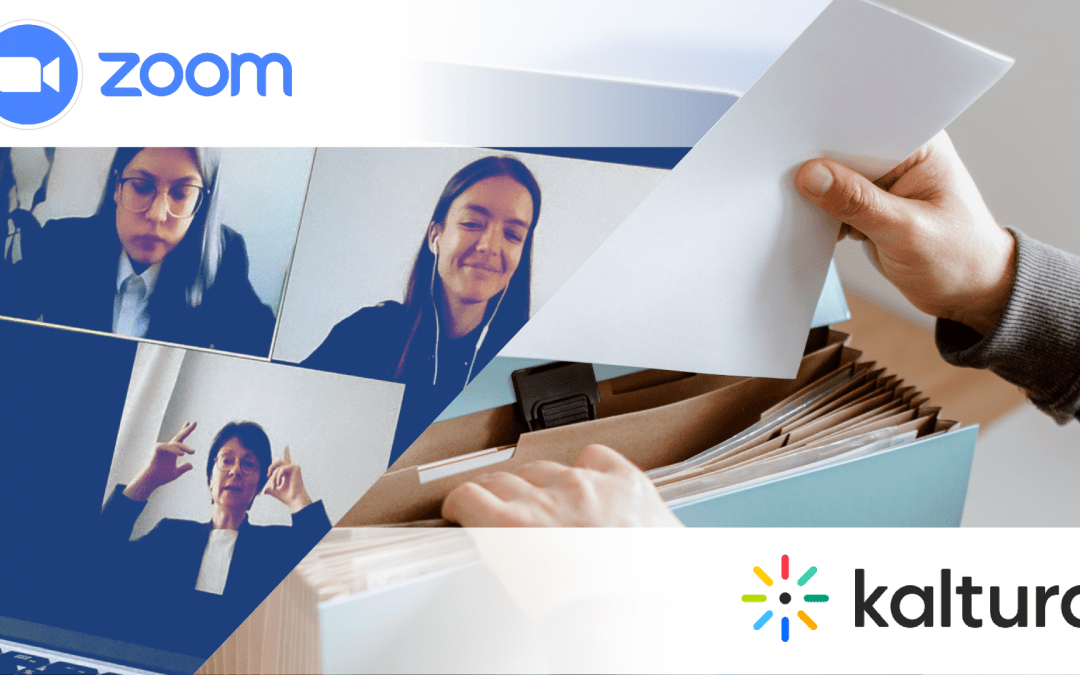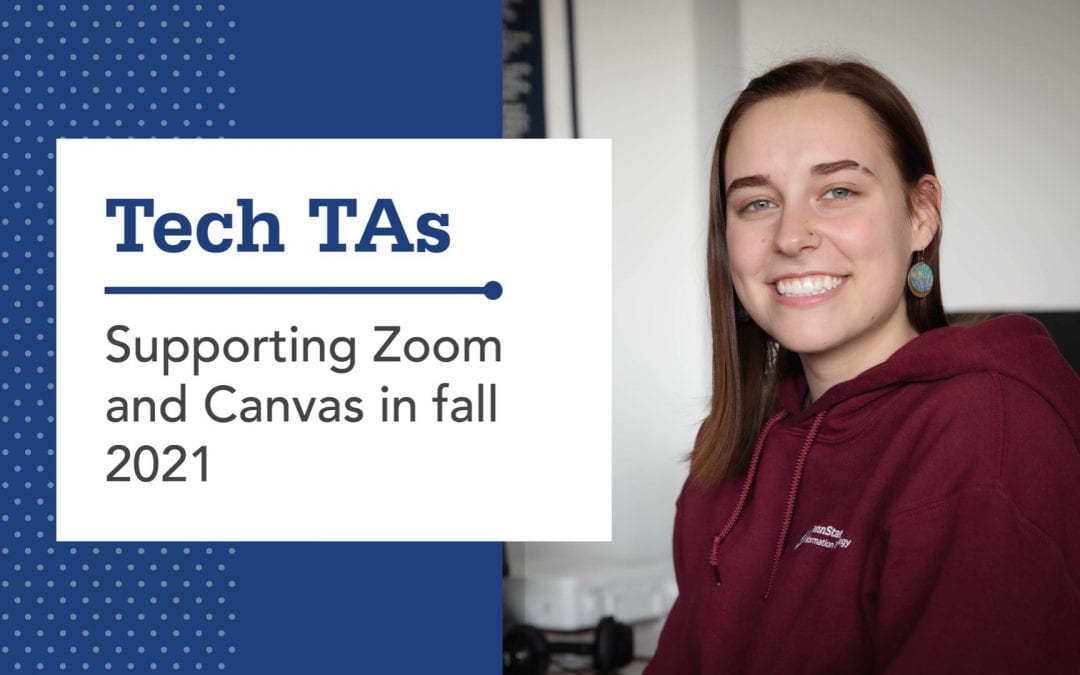
Aug 5, 2021 | Home Page
On August 16th, Penn State IT will be upgrading the integration with Kaltura and Zoom.
This upgrade will enhance the overall performance and collaboration between these two services, allowing for improved uploading of all Zoom recordings to Kaltura. Also, Zoom meetings scheduled in Canvas will automatically publish recordings to the Canvas Course’s Media Gallery.
Due to this new integration, the Zoom Cloud recording tab will be turned off in Canvas. To make Kaltura media available to students in your Canvas course, enable the Media Gallery in the navigation tab under Course Settings. Check out how to add Kaltura media to a Canvas course for additional information.
Users can view all recordings in their Kaltura MediaSpace, including Zoom recordings.
Please refer to the following articles for more information about Zoom recordings:
For the latest Zoom updates, news, resources, support, and training information, please visit zoom.psu.edu.
For more information about Kaltura, visit kaltura.psu.edu.

Jul 27, 2021 | Home Page
During the last academic year, Tech TAs provided important support to Penn State faculty teaching in virtual and hybrid modes. For fall 2021, the program will expand its services to better aide teaching and learning as the University transitions to primarily in-person instruction.
Tech TAs originated as “Zoom gurus” who managed virtual classroom technology and allowed faculty to focus exclusively on teaching. They will continue to serve in that capacity for in-person, hybrid, and virtual courses in the upcoming year while also assisting with Canvas.
In Zoom, a Tech TA’s work can include creating and assigning breakout rooms, moderating the chat, running polls, and processing a class’s Zoom recording. In Canvas, meanwhile, they can migrate and input course content, activate learning tool integrations (LTIs), build assignments or quizzes, and more.
Faculty should note that Tech TAs are not trained to proctor or grade exams, quizzes, or assignments. Additionally, Tech TAs cannot design course material or attend in-person classes or events.
Beginning Wednesday, August 4, 2021, at 7:00 a.m., faculty can submit a Tech TA Request Form. Upon being paired with a Tech TA, faculty will receive an introductory email and then a direct follow-up from their Tech TA to determine specific needs and next steps.

Jan 21, 2021 | Home Page, Uncategorized
New Student Orientation is a vital asset for incoming students designed to prepare them for all aspects of college life – everything from setting academic goals to being a good member of their campus community. The multi-day event helps get them on the right path for their time as a Penn State student.
As senior associate director for New Student Orientation (NSO), Katie Motycki has led orientation at Penn State since 2013 and knows a thing or two about what makes it successful. When the decision was made to change NSO to an online experience because of the pandemic, she turned to learning designers in Teaching and Learning with Technology (TLT) to help make it happen.
Boring handouts and endless links to read? Not on her watch. Motycki wanted Virtual Student Orientation to replicate the rich in-person experience she would otherwise plan. And she wanted it in Canvas, the learning management system students use for their classes.
“Since Canvas is such a huge part of the undergraduate experience, we knew that was something we should be using,” Motycki said.
Angie Dick, Learning Design manager in TLT, said her team was up for the challenge and honored to be involved in a project impacting every new student. Still, the project work was extensive and they were facing a tight timeline.
“We made a conscientious effort to build a virtual learning space where students would feel welcome and a part of their new campus,” she said.
Amy Kuntz and Jessie Driver, learning designers on Dick’s team, stepped up to lead the work. Kuntz said they created seven standard modules for all students based on a table of contents from Motycki. Those modules covered such things as the business of being a student; dining and residence life; health and safety; preparing for academic advising; sexual misconduct education; and diversity, equity, and inclusion.
Each module had learning objectives, and Kuntz and Driver used them to develop an assessment to test students’ understanding of the key concepts before they could move on to the next module.
They also created an additional module for 13 colleges and 19 campuses, with input from academic advisers in those areas. Each highlighted specific information incoming students in those locations needed to know, such as majors offered, GPA requirements, and other unique features.
“In the College of Earth and Mineral Sciences, for example, they only have about 300 entering students a year,” Driver said. “They intentionally keep the classes smaller, and the faculty and advisers really get to know the students. So the module for EMS included that.”
Finally, they created a standardized parent and family module that addressed topics they needed to know to support their student, such as tuition and billing, an academic overview, health and safety resources, and more.
Kuntz said she and Driver developed guidelines for what could be submitted and the formats to use, so academic advisers had a starting point to help them pull together information.
“We worked many nights and during the weekends to get everything done in the quick turnaround time. Not only did we have to put information into the Canvas modules, but we were working with the advisers across the Commonwealth to make sure what they submitted would work and offering drop-in hours and consultations to help them,” Kuntz said.
Media Commons Consultant Nate Ulrich also was involved, taking apart an interactive musical theater show put on by Penn State theater students called “Results Will Vary*.” One performance of the show was filmed at an NSO session last year by WPSU, and Ulrich edited about 15 clips from the raw video recording to embed in one of the modules.
Ulrich said the production covered sensitive topics such as alcohol abuse and sexual harassment.
When all was said and done, more than 250 staff from across the Commonwealth were engaged in some way in contributing to deliver a successful Virtual Orientation program welcoming 17,000 new students to Penn State in 2020.
“It’s safe to say we would not have been able to deliver the high-quality program we did without IT,” Motycki said. “Sure, we could have come up with a website of information, but it wouldn’t have been in Canvas in a way that was as thoughtfully designed. When you talk about things that take a village, this was truly a University-wide effort. The collaborative spirit to make it happen was remarkable.”

May 1, 2020 | Home Page
The Schreyer Institute for Teaching Excellence (SITE) and Teaching and Learning with Technology (TLT) have teamed up to offer virtual office hours to support faculty on any aspect of remote teaching and learning. We’ll be available for you to drop by and discuss both pedagogical and technical concerns. Join us at the following times using the Virtual Office Hours Zoom link.
Tuesday, May 5: 1:00-3:00 p.m.
Thursday, May 7: 3:00-5:00 p.m.
Monday, May 11: 1:00-3:00 p.m.
Thursday, May 14: 3:00-5:00 p.m.
Tuesday, May 19: 1:00-3:00 p.m.
Wednesday, May 20: 3:00-5:00 p.m.
Additional resources:




